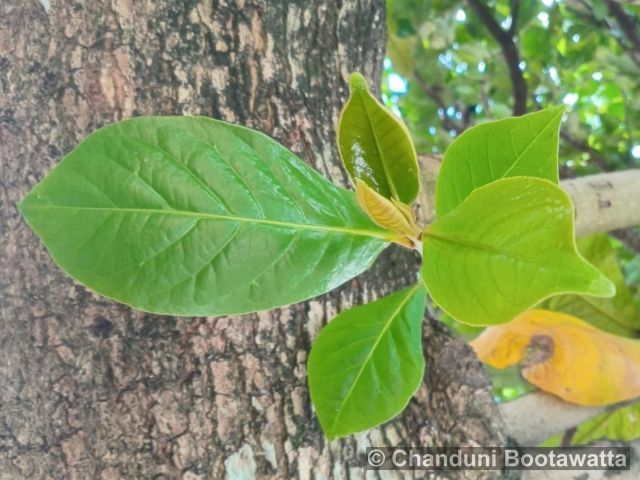Tento příspěvek byl přečten130krát!
Jak, Nangka
Syn.: Artocarpus brasiliensis Ortega, Artocarpus integrifolius auct., Artocarpus maximus Blanco, Artocarpus nanca Noronha, Artocarpus philippensis Lam.
Family: Moraceae

Description: Artocarpus heterophyllus is a tropical tree known for its large, glossy green leaves, which are ovate and deeply lobed. Its fruits are the largest tree-borne fruits in the world, with a spiky exterior and sweet, yellow, fibrous flesh inside, containing numerous edible seeds. The tree bears small, greenish-yellow flowers that grow directly on the trunk or large branches. Its bark is rough and grayish-brown, with shallow furrows and ridges. Jackfruit is valued for its versatile uses, including as a culinary ingredient in various dishes, a source of timber for construction, and its latex for medicinal purposes and as an adhesive.


Substitutions: Artocarpus altilis (breadfruit) – shares some similarities with jackfruit in terms of its tree structure and fruit appearance, although the fruits are smaller and have a different texture. Durio spp. (Durian) – which also belongs to the same family as jackfruit and offers a distinctive flavor profile, albeit with a strong odor that some find off-putting.


Ecology: Jackfruit thrives in tropical climates with warm temperatures, high humidity, and abundant rainfall, while requiring well-drained, fertile soil rich in organic matter and essential nutrients such as nitrogen, potassium, and phosphorus.

General Distribution: Widely distributed throughout tropical regions of South and Southeast Asia, including countries such as India, Bangladesh, Sri Lanka, Myanmar, Thailand, Malaysia, Indonesia, and the Philippines.



Author of text and photos: Chanduni Bootawatta.
Photographed Kandy, Sri Lanka on 29/02/2024.



 Poslat emailem
Poslat emailem











